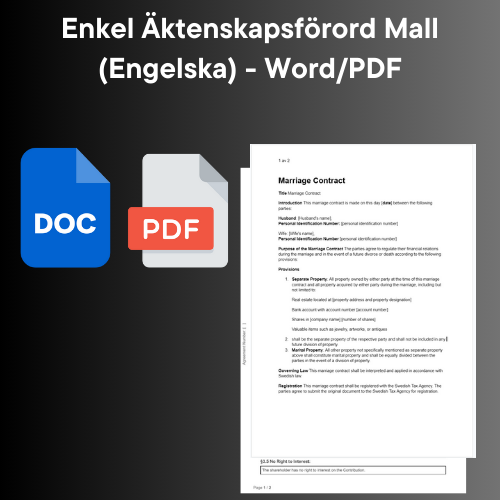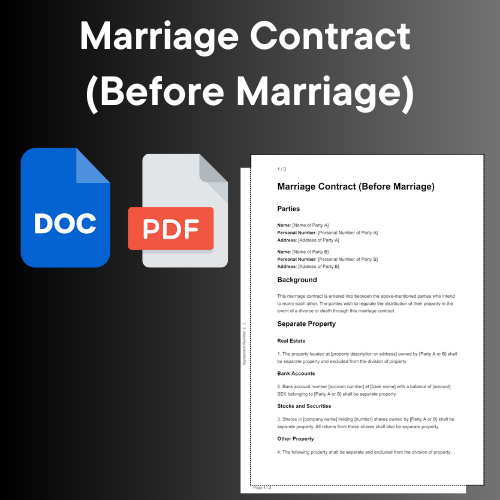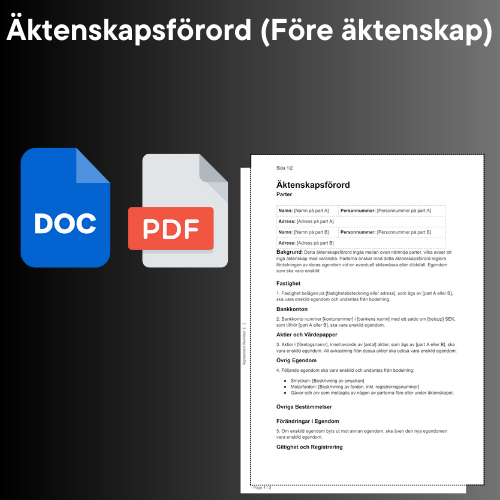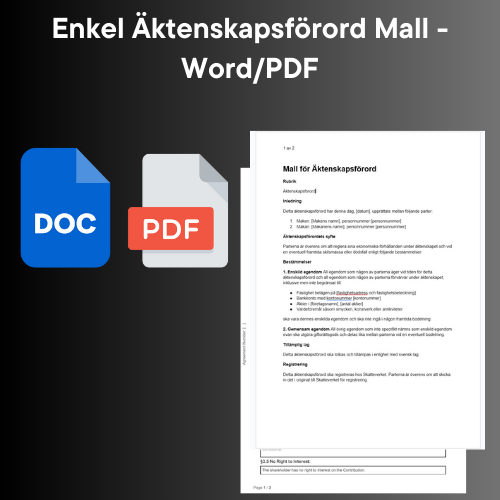Do I need to draw up a prenuptial agreement?
Share
Do I need to draw up a prenuptial agreement?
Table of Contents
- What is a prenuptial agreement?
- Why draw up a prenuptial agreement?
- Legal requirements and registration
- Contents of the prenuptial agreement
- Change or cancel a prenuptial agreement
- Practice and examples
- Important considerations
What is a prenuptial agreement?
A prenuptial agreement is an agreement where the spouses decide that certain property must be separate and not covered by matrimonial law. This means that in the event of a divorce, that property will not be divided between the spouses. Without a prenuptial agreement, all property acquired by the spouses during the marriage is divided equally, regardless of who actually bought or earned it.
Why draw up a prenuptial agreement?
There are several reasons why a prenuptial agreement may be appropriate:
- Protect specific property: If you own assets that you want to protect, such as a family business or real estate, a prenuptial agreement can ensure that those assets are not divided in a divorce.
- Unequal wealth: If there is a significant difference in wealth between the spouses, the wealthier spouse may want to protect their assets from being divided in a divorce.
- Stepchildren: If one of the spouses has children from a previous relationship, a prenuptial agreement can protect property from being indirectly passed to those children through inheritance.
Legal requirements and registration
For a prenuptial agreement to be valid, it must meet certain formal requirements:
- In writing and signed: The prenuptial agreement must be in writing and signed by both spouses.
- Dated: It must be dated and submitted for registration with the Tax Agency.
- Registration: The foreword comes into force from the day it is registered with the Tax Agency. Preambles drawn up before the marriage and submitted within one month of the marriage are, however, already valid from the conclusion of the marriage.
Contents of the prenuptial agreement
A prenuptial agreement can specify which property is to be separate. This may include:
- Real estate: For example, a home that one of the spouses owned before the marriage.
- Shares and other securities: If the spouses want returns from shares or funds to also be separate property, this must be specifically stated.
- Gifts and inheritances: While gifts and inheritances can normally be kept out of probate, a prenuptial agreement can provide extra protection and clarity.
Change or cancel a prenuptial agreement
A prenuptial agreement can be amended or revoked by the spouses drawing up a new prenuptial agreement, which must also be registered with the Tax Agency. A time-limited or conditional prenuptial agreement is not accepted according to Swedish law.
Practice and examples
There are several examples where prenuptial agreements can be particularly useful:
- Protection of family business: A business owner wants to protect his business from being divided in a divorce.
- Property with sentimental value: A spouse wants to keep a summer cottage that has been in the family for generations.
- High incomes or large assets: Spouses with significant financial inequality want to protect the wealthier spouse's assets.
Important considerations
Before drawing up a prenuptial agreement, you should consider:
- Consult a lawyer: A lawyer can help ensure that the prenuptial agreement meets all legal requirements and is clearly worded to avoid future disputes.
- Clarity: Clearly specify what is to be individual property and how any returns are to be handled.
By carefully considering these points and seeking legal advice, you can ensure that your prenuptial agreement protects your interests in the best way possible.
For further information and advice, contact a family law lawyer or visit the Tax Agency's website for details on registration and legal requirements.




